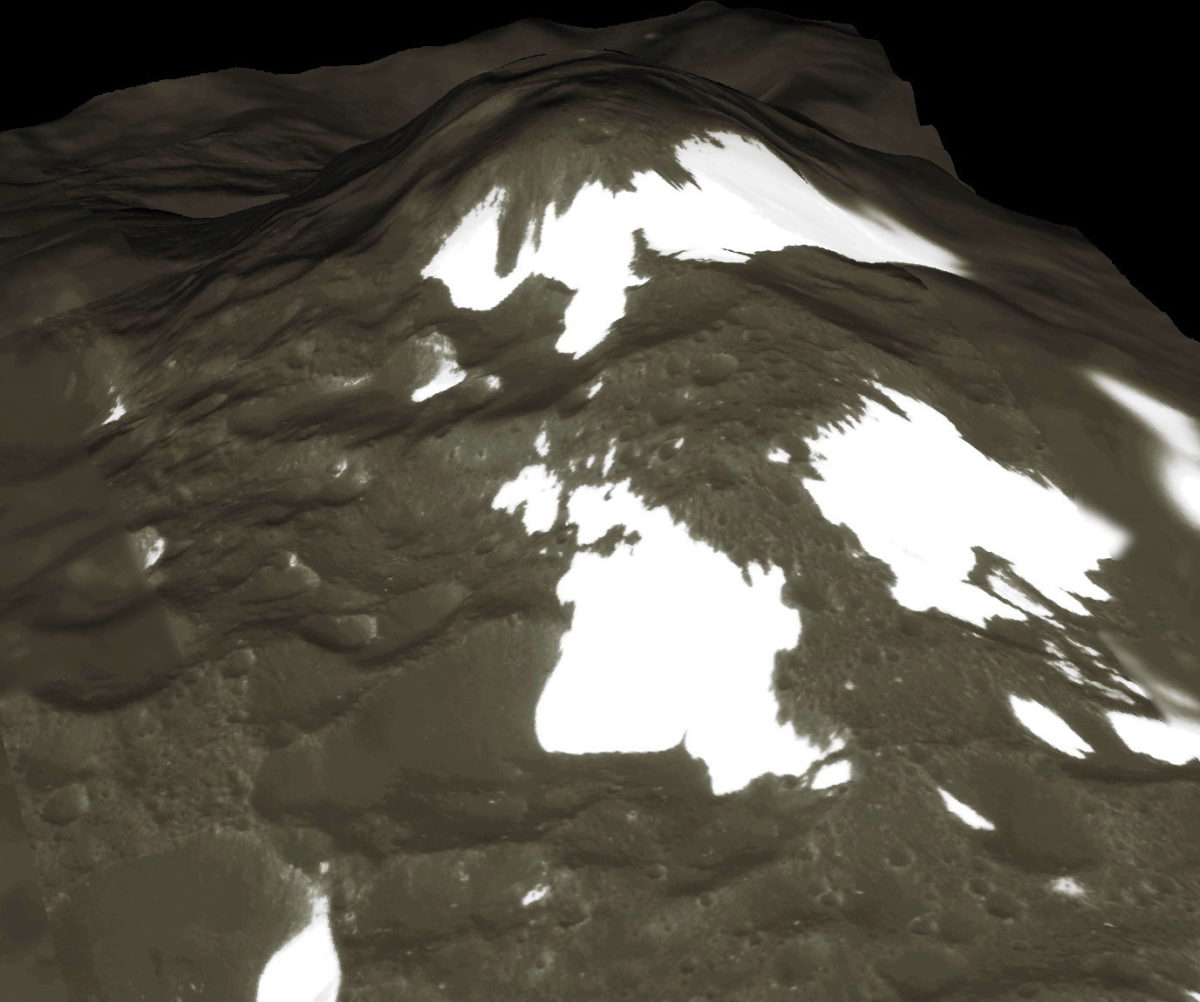Emily Lakdawalla • Sep 02, 2010
Fly over Saturn's icy moons
A couple of weeks ago Paul Schenk posted a few really cool videos to his personal blog. Paul's subspecialty is the topography of icy moons, and he's been doing a lot of work on the moons of Saturn lately. My favorite of the three videos he posted recently flies along the famous equatorial ridge of Iapetus, with its weird, rounded mountain peaks and icy white flanks. (I should note that even though the flanks are shown bright white here, they're still pretty dirty as Saturn moon ices go. Still, they'd certainly appear shiny white with respect to the sooty black dark material that covers the rest of these mountains.)
Paul's videos are on YouTube but for some reason the Embed link isn't appearing for me, so I'll just share links to his Iapetus, Rhea, and Tethys videos, and include a cool still from the Iapetus one below.

These videos are cool -- I can't wait to see what he does for Vesta, now that he's been newly created as a member of the Dawn science team!
Let’s Go Beyond The Horizon
Every success in space exploration is the result of the community of space enthusiasts, like you, who believe it is important. You can help usher in the next great era of space exploration with your gift today.
Donate Today

 Explore Worlds
Explore Worlds Find Life
Find Life Defend Earth
Defend Earth

